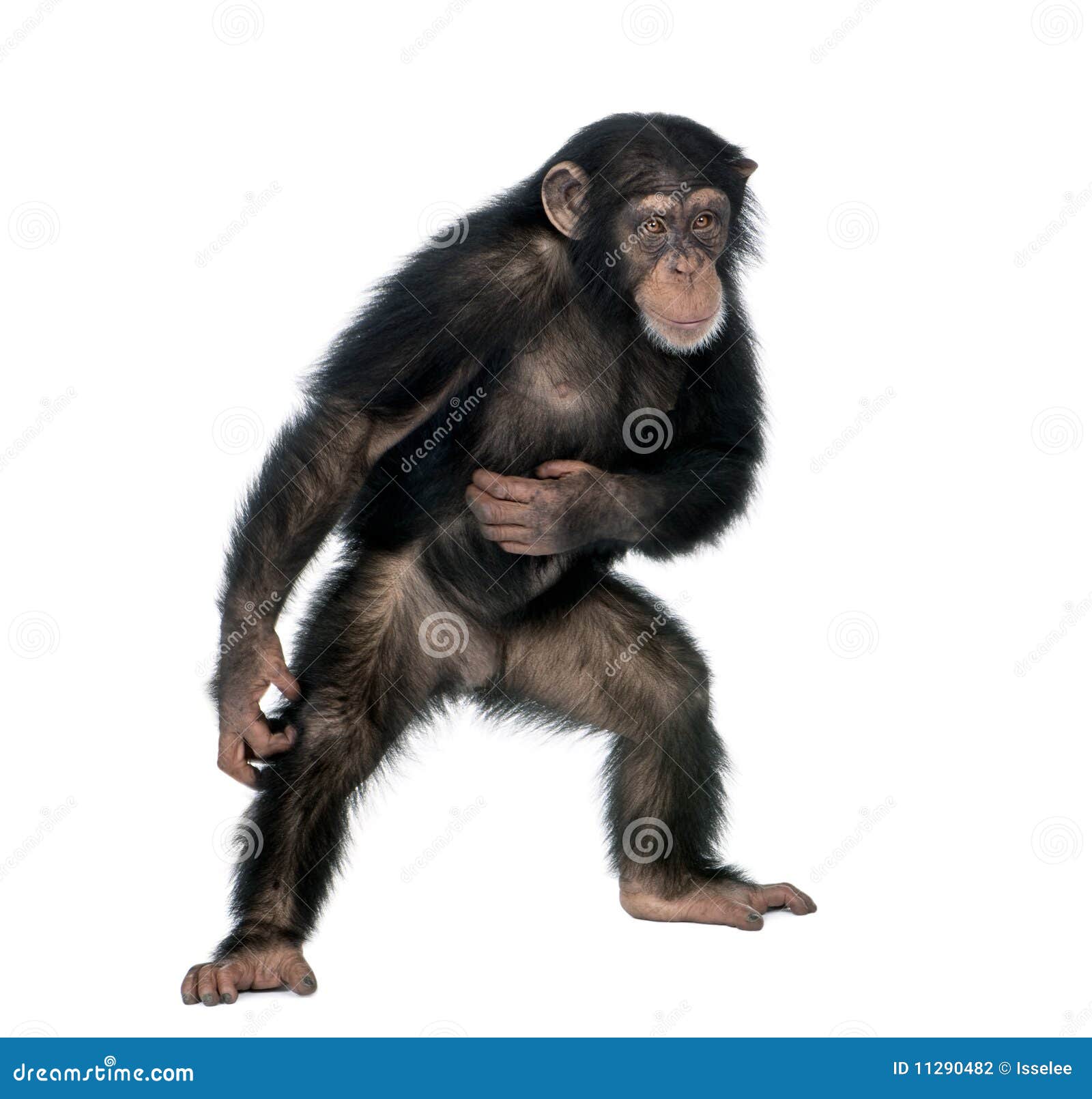
For this reason, animals in the majority of classical tests are anesthetized. Īn important aspect of the classical mark-test (or rouge test) is that the mark/dye is nontactile, preventing attention being drawn to the marking through additional perceptual cues ( somesthesis). Other mark-directed behavior included turning and adjusting of the body to better view the mark in the mirror, or tactile examination of the mark with an appendage while viewing the mirror. The chimpanzees sometimes visually or olfactorily inspected their fingers after touching the marks. The frequency increased four to ten, with the mirror present, compared to only one when the mirror had been removed. After 30 minutes, the mirror was reintroduced into the cage and the frequency of touching the marked areas again determined.
Chimpanzee face front view full#
After regaining full consciousness, he then recorded the frequency with which the chimps spontaneously touched the marked areas of skin. Gallup then removed the mirror before returning the chimpanzees to the cage. When the dye dried, it had virtually no olfactory or tactile cues. Gallup anesthetized the chimps and then painted a red alcohol-soluble dye on the eyebrow ridge and on the top half of the opposite ear. Gallup expanded the study by manipulating the chimpanzees' appearance and observing their reaction to their reflection in the mirror. Eventually, the chimps used their own reflections for self-directed responding behaviors, such as grooming parts of their body previously not observed without a mirror, picking their noses, making faces, and blowing bubbles at their own reflections. Initially, the chimpanzees made threatening gestures at their own images, ostensibly seeing their own reflections as threatening. A multitude of behaviors was recorded upon introducing the mirrors to the chimpanzees. Next, a full-length mirror was placed in the room for a total of 80 hours at periodically decreasing distances.

Each chimpanzee was put into a room by itself for two days. experimentally investigated the possibility of self-recognition with two male and two female wild preadolescent chimpanzees ( Pan troglodytes), none of which had presumably seen a mirror previously. He also watched Jenny gaze into a mirror and noted the possibility that she recognized herself in the reflection. This started him thinking about the subjective experience of an orangutan.

While visiting the London Zoo in 1838, Darwin observed an orangutan, named Jenny, throwing a tantrum after being teased with an apple by her keeper. The inspiration for the mirror test comes from an anecdote about Charles Darwin and a captive orangutan. A wide range of species has been reported to fail the test, including several species of monkeys, giant pandas, and sea lions. Species that have include the great apes, a single Asiatic elephant, rays, dolphins, orcas, the Eurasian magpie, and the cleaner wrasse. Very few species have passed the MSR test. If the animal then touches or investigates the mark, it is taken as an indication that the animal perceives the reflected image as an image of itself, rather than of another animal. When the animal recovers from the anesthetic, it is given access to a mirror. paint or sticker) on an area of the body the animal normally cannot see (e.g. In the classic MSR test, an animal is anesthetized and then marked (e.g. However, agreement has been reached that animals can be self-aware in ways not measured by the mirror test, such as distinguishing between their own and others' songs and scents. The MSR test is the traditional method for attempting to measure physiological and cognitive self-awareness. as an attempt to determine whether an animal possesses the ability of visual self-recognition. The mirror test-sometimes called the mark test, mirror self-recognition ( MSR) test, red spot technique, or rouge test-is a behavioral technique developed in 1970 by American psychologist Gordon Gallup Jr. The hamadryas baboon is one primate species that fails the mirror test.

Animal self-awareness test to determine self-recognition in a mirror


 0 kommentar(er)
0 kommentar(er)
